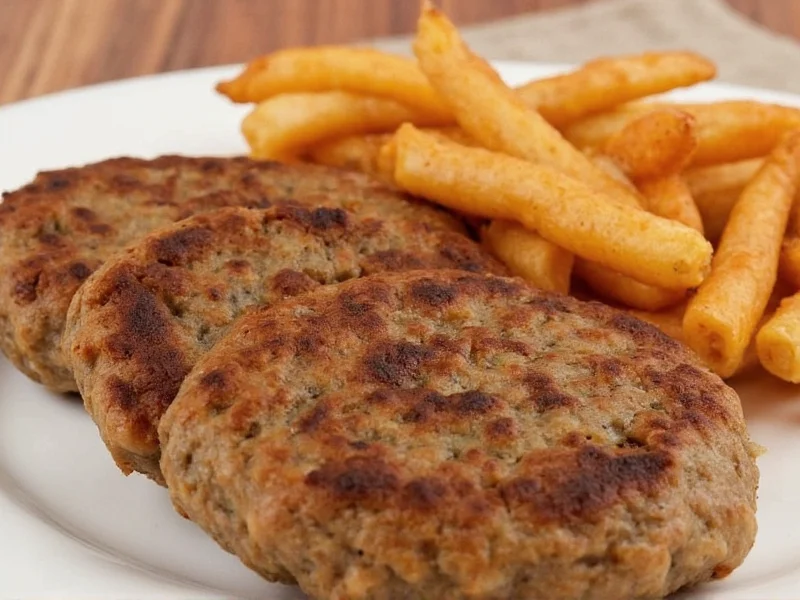Jimmy Dean has established itself as a leading breakfast meat brand since 1969, with sausage patties representing one of their most popular product lines. These convenient, pre-cooked patties have become pantry staples for home cooks seeking quick protein options for breakfast sandwiches, recipes, and meal prep. Understanding their proper preparation, nutritional profile, and creative applications can maximize both flavor and convenience.
Product Varieties and Packaging
Jimmy Dean offers multiple sausage patty options to accommodate different dietary preferences and nutritional needs. The standard packaging contains 6-8 patties per 12-ounce tray, sealed for freshness. Most varieties maintain quality for 7-10 days when refrigerated after opening, or up to 2 months when frozen.
| Variety | Calories per Patty | Protein (g) | Fat (g) | Special Features |
|---|---|---|---|---|
| Original Pork | 170 | 7 | 15 | Classic flavor, no artificial preservatives |
| Regular Pork | 160 | 7 | 14 | Reduced sodium option available |
| Turkey | 100 | 10 | 6 | Lower fat, gluten-free |
| Plant-Based | 140 | 7 | 9 | Vegan option, soy and pea protein |
Nutritional Considerations
When evaluating Jimmy Dean sausage patties nutrition facts, several factors deserve attention. The original pork variety delivers substantial protein for breakfast but contains 15 grams of fat per patty, with 5 grams being saturated fat. Those monitoring sodium intake should note that a single patty contains approximately 510mg sodium, representing about 22% of the recommended daily value.
The turkey sausage patties provide a leaner alternative with 100 calories and 6 grams of fat while maintaining 10 grams of protein. This makes them particularly suitable for those following calorie-controlled diets without sacrificing protein content. The plant-based option offers comparable protein to pork varieties while eliminating animal products entirely.
Optimal Cooking Methods
Proper preparation significantly impacts the texture and flavor of fully cooked sausage patties. While many consumers simply microwave them for convenience, alternative cooking techniques yield superior results:
Stovetop Technique
Place patties in a cold skillet, then heat over medium for 2-3 minutes per side. This gradual heating prevents exterior burning while ensuring thorough warming. For crispier results, extend cooking by 30 seconds per side. This method works exceptionally well for creating breakfast sandwiches as the patties develop a desirable crust.
Air Fryer Instructions
Preheat air fryer to 375°F (190°C). Place patties in a single layer without overlapping. Cook for 4-5 minutes, flipping halfway through. The circulating hot air creates an evenly browned exterior while maintaining juiciness inside. This represents one of the best ways to reheat Jimmy Dean sausage patties when seeking restaurant-quality results at home.
Oven and Microwave Options
For oven preparation, arrange patties on a baking sheet and heat at 350°F (175°C) for 10-12 minutes. Microwave instructions vary by appliance, but generally require 45-60 seconds per patty on high. While microwaving offers maximum convenience, it often produces less desirable texture compared to other methods.
Creative Culinary Applications
Beyond traditional breakfast service, Jimmy Dean sausage patties serve as versatile ingredients in numerous recipes. Crumbled patties enhance breakfast casseroles, adding protein and flavor without additional preparation time. They also work well in breakfast burritos, providing consistent seasoning and texture.
For lunch and dinner applications, consider using crumbled sausage patties in pasta sauces, soups, or as pizza toppings. The pre-cooked nature means they require minimal additional preparation, making them ideal for quick weeknight meals. Many home chefs report success incorporating them into meatloaf mixtures for added moisture and flavor complexity.
Storage and Food Safety Guidelines
Proper storage maintains both safety and quality. Unopened packages remain safe in the refrigerator until the printed use-by date. After opening, transfer unused patties to an airtight container and consume within 7 days. For extended storage, freeze patties in a single layer on a baking sheet before transferring to freezer bags, preventing them from sticking together.
When reheating frozen patties, add 1-2 minutes to standard cooking times. Never refreeze previously frozen patties that have been fully thawed, as this compromises both texture and food safety. Always verify internal temperature reaches 165°F (74°C) when reheating for food safety.
Common Preparation Mistakes to Avoid
Many consumers make errors when preparing Jimmy Dean sausage patties that compromise quality. Using high heat creates burnt exteriors with cold centers. Adding oil to the pan is unnecessary since the patties contain sufficient fat. Overcrowding the cooking surface prevents proper browning and leads to steaming rather than searing.
For optimal results when making breakfast sandwiches with Jimmy Dean sausage patties, toast the bread or English muffin first. This creates a moisture barrier that prevents sogginess while the patty finishes cooking. Adding cheese during the last 30 seconds of cooking allows for perfect melting without overcooking the meat.











 浙公网安备
33010002000092号
浙公网安备
33010002000092号 浙B2-20120091-4
浙B2-20120091-4